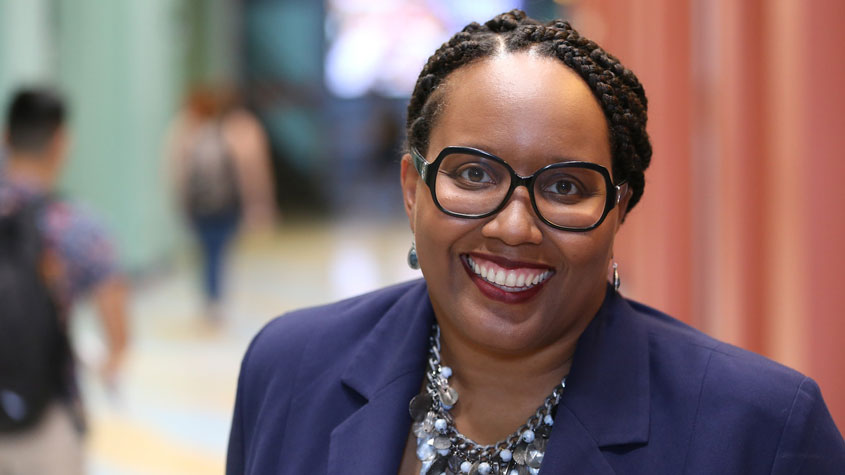This profile is the part of our Spotlights on Diversity in Engineering, which recognize individuals, teams or organizations with connections to the Rice University School of Engineering.
I have been in engineering education for nearly a quarter of a century. In that time, much has changed, though at least one thing has not changed: I still see relatively few people like me – a woman, a Black American, a person with a disability – in engineering.
As engineers, we are challenged with solving problems. The solutions are best when they consider the diversity of the people we serve and include diverse perspectives. In October, National Disability Employment Awareness Month, I’d like to raise awareness of the need to remove barriers, physical and otherwise, to people with disabilities entering and thriving in engineering education programs and the engineering workforce.
Research shows that engineering and law professors have less favorable attitudes than those in other disciplines towards accommodations for students with disabilities, especially invisible disabilities. Some view accommodations as lowering standards or as a way for students to “game the system,” rather than as creating equity, assuring those students have an equal chance to succeed. I have had conversations with industry representatives about STEM workforce development initiatives for students with vision and hearing disabilities who have said, “I don’t think we have any jobs they can do,” without even taking the time to engage with the students or their instructors. Such attitudinal barriers are the most difficult to overcome.
To address physical barriers, one of my research projects focuses on mathematics accessibility for students who are blind or who have visual impairments. Funded by a grant from the National Science Foundation (NSF), the project is designed to refine Process-Driven Math (PDM), an audio-based method of teaching and assessing mathematics, and test its efficacy.
PDM was developed by Ann Gulley, Logan Prickett and Jordan Price at Auburn University-Montgomery (AUM). Logan entered AUM as an undergraduate student with a unique set of disabilities – almost total blindness, severe ambulatory challenges affecting his arm and legs, and a voice that cannot speak above a whisper. Employing a user-centered, universal design approach, “The Logan Project” team developed PDM to reduce the cognitive load associated with complex mathematical problems by “chunking” information and using mathematical terminology to systematically reveal the details of the problem solving as the student progresses through the solution.
Through the NSF grant, research scientist Canek Phillips (MECH ’07) and I have been working with AUM to get further input on PDM from users’ perspectives in high school courses at state schools for the blind and to study the efficacy of a visually adapted version of PDM in college classrooms. Phillips is leading efforts to translate the lessons we are learning to improve accessibility in calculus and fundamental mechanics courses. The goal is to remove barriers so all students can thrive in academic programs and the workforce.
The Office of Federal Contract Compliance Programs requires government contractors to have affirmative action plans for employing people with disabilities. I speculate that engineering and tech companies, and even institutions of higher education with engineering and other STEM programs, build their plans with focus on the non-technical workforce rather than technical workers. NSF funds are available to support the full participation of researchers – including graduate and undergraduate students – with disabilities. Through its Facilitation Awards for Scientists and Engineers with Disabilities (FASED) program, NSF provides funds for the purchase of assistive technologies and services needed to facilitate the engagement of researchers with disabilities in a given project. Such programs are designed to assure equity and inclusion for people with disabilities in academic and workforce settings.
As we progress with our work throughout the year, let’s consider how we can remove barriers to foster inclusive environments conducive to everyone’s success.
Body
Working to remove barriers in STEM education
Spotlights on Diversity in Engineering: Yvette E. Pearson

